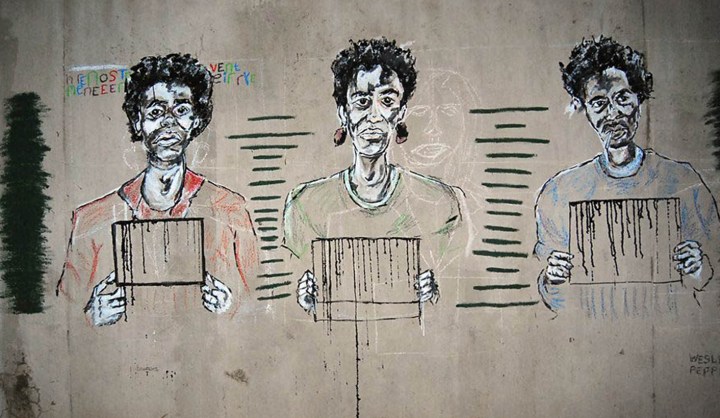Maverick Life
Township Art against the odds: Bataki Collective

Township artists don’t want you to see buying their art as supporting them, but rather as an investment. There’s a new generation of collectives that’s starting to understand the true value of the talent they develop. And if they have anything to do with it, their work will be hitting the galleries on large scale in the near future. By BORIS GORELIK.
It’s hard to make a living by doing art — particularly if you live in a township. But some people never give up.
Louise van der Bijl knows many of them. She and her friends operate the Assemblage Studios in Newtown, Johannesburg. They try to help young artists like themselves to establish a footing in the Johannesburg arts world.
“In townships, people are very keen to create a space for themselves and to improve their skills,” Van der Bijl says. “Emerging artists elsewhere don’t try as hard. Maybe it’s because they’ve gone through academic institutions and have a lot more confidence.”
Inspired by Africa: Bataki Collective
Working together is a way to break through barriers. That’s the thinking behind the current trend among black artists of Johannesburg. They form collectives.
While they may not always share the same creative vision, they share resources, ideas and skills. They work together towards common goals — developing markets for their art, generating income and encouraging community participation in the visual arts.
Bataki Kollective is a group of twenty visual artists from different parts of Johannesburg, formed in 2011. Many of them completed tertiary studies at the Artist Proof Studio, Wits or UJ.
Originally, they established their collective to hold themed exhibitions together — such as Images of Women, ART-iculating the Constitution, and Celebrating Africa, the latter two at Constitutional Hill.
Anne Gordon, Director of Vula Amehlo Art Development, gives Bataki artists guidance and assistance.
“The idea is to pick up where the tertiary art institutions left off,” she says, “to give artists more opportunities in formal and informal spaces. I also aim to build their business and marketing skills through practical experience and mentoring.”
Bataki artists have become their own curators and promoters. “It’s strength in numbers,” as one of the members, street artist Wesley Pepper, puts it.
Members come not only from this country, but also from Zimbabwe and Mozambique. “We get to learn about techniques and styles in other parts of Africa,” says John Vusi Mfupi. “By appreciating these traditions, we’re growing as artists.”
Another thing that they have in common is what they call their “social consciousness”. Their shows have been dedicated to important socio-political issues. Many members have been involved in teaching art to children and youth in townships and rural areas. They see mentoring as a way of giving back to their communities.
Last year, Bataki artists took part in a very successful exhibition, South African Voices, at Washington Printmakers Gallery in the US. DM

Jemmiro – Fire

Jemmiro – Through Children’s Eyes

John Vusi Mfupi (2)

John Vusi Mfupi (2)

John Vusi Mpufi (3)

Lebogang Sithole – Maphitha Mthembu

Lehlohonolo Dhlamini – Appreciation

Nkosana Ngobese

Tebogo Serero – Girl Child 1

Wesley Peper Street Art
Main artwork by Wesley Peper
















 Become an Insider
Become an Insider